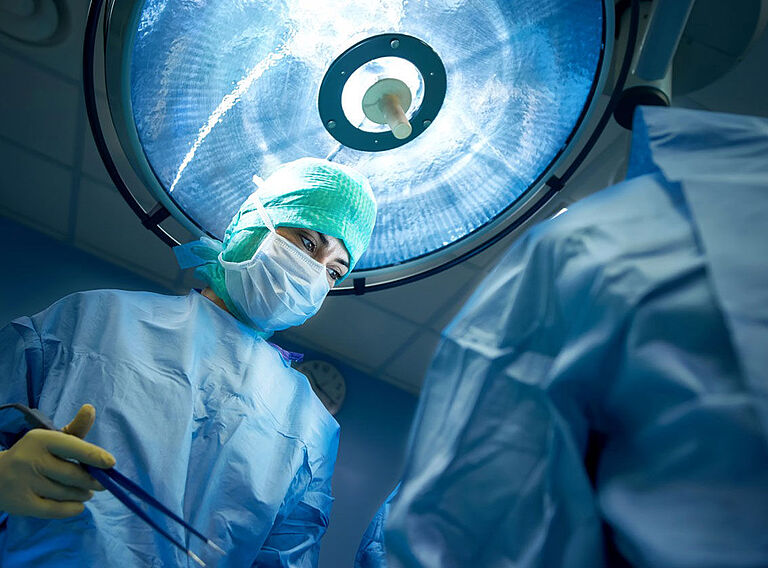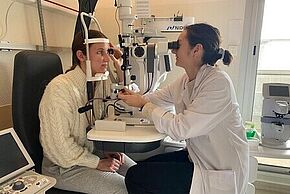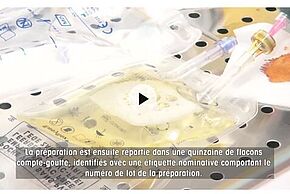Accueil, Divers
Vous souhaitez ne plus porter de lunettes ou de lentilles ?
2 documents Published on

POLE NEUROSCIENCES TETE ET COU
The cornea is the eye’s first transparent layer. Like a watch glass, it covers the front part of the eye over the iris and pupil. It transmits light to the lens and the retina. When the cornea becomes opaque, light can no longer reach the retina, leaving the patient visually impaired or blind.
The main conditions include: ocular burns, multiple graft failures, Stevens-Johnson syndrome / Lyell’s syndrome, trachoma, ocular pemphigoid, aniridia, limbal stem cell deficiency, and corneal neovascularization.
The osteo-odonto-keratoprosthesis (OOKP) is a mixed bone-tooth-optic prosthesis made with PMMA (plexiglass). The patient’s dental tissue is used to support an artificial ocular prosthesis, allowing light to reach the retina and restore vision.
The tooth is a tissue that does not resorb over time. This property gives it better long-term stability and allows it to support the prosthesis. If the patient lacks a tooth of sufficient quality or prefers, a small tibial bone graft can be taken instead.
In the first surgical stage, the tooth is harvested along with a strip of maxillary bone by a maxillofacial surgeon, Dr. Marie De Boutray (CHU Montpellier). The harvested tooth is prepared to create a flat surface. Then, the plexiglass lens is inserted into the tooth. The eye is covered with buccal mucosa to reconstruct the ocular surface, giving a whitish-pink appearance with its keratoprosthesis.
The mixed prosthesis is then temporarily implanted subcutaneously for three months to promote vascularization and fibrosis. Three months later, the prosthesis is removed from its temporary location and grafted onto the blind eye, allowing the patient to regain visual autonomy (Prof. Vincent Daien).
Pr. Daien (Ophthalmologist) and Dr. De Boutray (Maxillofacial Surgeon) specialize in this OOKP technique, which they perform at CHU Montpellier.
Liens vidéos YouTube
Accueil, Divers
2 documents Published on
Prévention-éducation
PDF - 419,4 Ko

